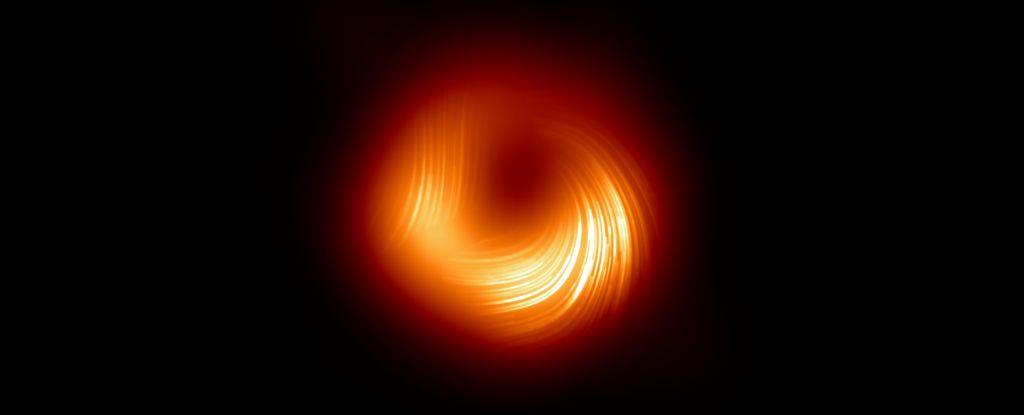
Recent observations of the supermassive black hole known as M87* have revealed unprecedented changes in its magnetic field, marking a significant milestone in astrophysics. Using data collected by the Event Horizon Telescope in 2017, 2018, and 2021, scientists identified a complete reversal in the direction of the black hole’s magnetic field, a phenomenon that has never been documented before in such cosmic environments.
The striking findings indicate that while the black hole itself remains stable, the region surrounding its event horizon is subjected to intense and dynamic cosmic conditions. Over the four-year period, researchers mapped changes in the polarization of M87*’s magnetic field, suggesting that it undergoes rapid alterations on short cosmic timescales.
Significant Changes in Magnetic Field Direction
Located approximately 55 million light-years from Earth, M87* boasts a mass around 6.5 billion times that of the Sun. It has become a focal point for astronomers since the Event Horizon Telescope collaboration first imaged it in 2019. The collaboration has since continued to observe M87*, gathering extensive data to understand the behavior of hot material swirling around the black hole’s edge.
Astrophysicist Eduardo Ros from the Max Planck Institute for Radioastronomy emphasized the importance of these jets in shaping the evolution of their host galaxies. “By regulating star formation and distributing energy across vast distances, they affect the life cycle of matter on cosmic scales,” he stated.
The magnetic field plays a crucial role in the formation of these jets. As material orbits near a black hole, it organizes into a disk. While some material inevitably crosses the event horizon, a portion is redirected along the magnetic field lines, accelerating to the poles and launching into space at speeds nearing that of light.
Mapping the Polarization Changes
To investigate the formation of these jets, the Event Horizon Telescope team conducted a series of observations of M87* over multiple years. They focused on the polarization of light emitted from the black hole’s vicinity. When light travels through a magnetized environment, its wave orientation can become aligned, revealing hidden dynamics.
Although the images of M87* appeared relatively unchanged over time, when polarization data was overlaid, significant variations emerged. In 2017, the magnetic fields appeared to spiral in a clockwise direction. By 2018, the direction shifted to anti-clockwise and stabilized. By 2021, the fields again spiraled anti-clockwise. These observations suggest that the magnetic environment around M87* is far from static.
Astronomer Paul Tiede from the Harvard & Smithsonian Center for Astrophysics remarked, “What’s remarkable is that while the ring size has remained consistent over the years – confirming the black hole’s shadow predicted by Einstein’s theory – the polarization pattern changes significantly.” This indicates that the magnetized plasma in the vicinity of the black hole is dynamic and complex.
The findings reveal a turbulent environment around M87*, showcasing how its magnetic fields direct the flow of material. Some of this material is propelled beyond the event horizon, while others are expelled into space as enormous jets.
Looking ahead, the Event Horizon Telescope aims to build upon these significant discoveries. Remo Tilanus of The University of Arizona’s Steward Observatory announced plans for a series of rapid-fire observations scheduled for March and April 2026. “We are excited to be gearing up to capture the first movie of M87*, something that has been on our wish list ever since that first image of a black hole,” he said.
The current research has been published in the journal Astronomy & Astrophysics, contributing valuable insights into the complex dynamics of black holes and their environments.






